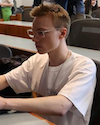Alumni
In Their Words
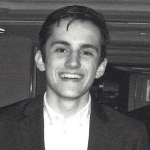
Alexander Fogelson
"I think it's implicitly valuable to spend three weeks going all in on learning something new, surrounded by other brilliant students and mentors who are in the same boat. It felt like I built strong bonds with other students, challenged many ways I think about the world, and did so while learning a tremendous amount about a very powerful tool and method of thinking."

Anneline Daggelinckx
"The experience was amazing. I met so many smart and kind people who I can now call friends. I learned a lot about executing a research project from start to finish. It is lovely to have the mentors and TA's also as friends, not feeling any kind of hierarchy. I had the greatest time."

Botan Cevik
"I can summarize the whole process of the project as trying to construct a tower with a strong base, which was provided by Stephan Wolfram. That was intellectually challenging."

Daniel de Souza Carvalho
"If you want to see life, the universe and everything else from a computing point of view, NKS Summer School is the right place to start!"

Emmanuel Gárces Medina
"It's a great environment for students of everywhere with a lot of conversations about nature, computations, complexity and new ideas arising in these current times."
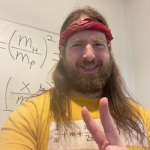
Matthew Fox
"It was a fantastic place where curious folk can gather, network and exchange ideas. Personally I hope to collaborate with some of the people I met, perhaps even working on research that came about from a simple conversation."

Mayla Boguslav
"I enjoyed the experience and learned a lot from other students, instructors and my mentor. The idea of looking through a defined space, searching for the interesting cases is fascinating and will change how I research, because you never know what you will find."

Miles Miller-Dickson
"I was impressed by the diverse representation of backgrounds from the participants. The best takeaway for me was getting to meet a lot of interesting people from around the world."

Nestor Diaz
"The Wolfram Summer School was one of my greatest life experiences; I gained new tools that help me to do my research in a better way, and meeting people from many cultures around the world is something unique."

Raúl Cázares
"The Wolfram Science Summer School is an amazing multi-disciplinary and multicultural experience. It changes your mind, the way you usually work, gives you more points of view and helps you for your career."

Sean Lynch
"It's a learning experience for anyone interested in being a part of an exciting new frontier. I got the sense of being one of a large group of people working to build the groundwork for this new science."

Tarang Janawalkar
"Best experience of my life, I met so many amazing people and made lifelong friends. Lots of new connections as well."
Advice for Future Attendees…
Isaac Ramos Reina
"Be prepared, read and study before coming. Once you are at the school, try to balance things out. There is time for the project but also time for meeting amazing people and talking and socialising with them."
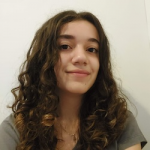
Júlia Campolim de Oste
"Don't worry, embrace the challenge. There are plenty of people at WSS who can help you."

Kiran Shrestha
"Come with an idea—however vague it may seem at first—that you feel very enthusiastic about pursuing, and you will be glad that you did, because with all the support of the wonderful people and atmosphere here, you will be simply amazed at how your idea can take off—way beyond your expectations!!!"

Lucas Squillante
"Be open, be humble, and enjoy every single minute in WSS. Really invest all of your energy by extracting the most out of it. You can sleep after the school finishes!"

Muskaan Shahzad
"My advice to future Wolfram Summer School participants is to come in with an open mind, a willingness to learn fast, and the courage to ask questions. The pace is intense but incredibly rewarding. Don't be afraid to dive into unfamiliar territory, whether that's the Wolfram Language itself or a new research concept. Make the most of your mentors and peers; the support system is one of the most valuable parts of the experience. Finally, treat your project as a real opportunity to explore something meaningful to you. The more personally invested you are, the more impactful your work (and your learning) will be."

Rakesh Vijay Kumar
"Learn the basics beforehand, but don't lock yourself into a single project idea. Come in with an open slate. If you do that, you'll learn a lot, get challenged the right way, and leave satisfied. That's the best advice I got, and I'd pass it on."
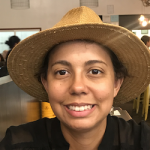
Robyn Gausman-Burnett
"Plan to be up late. The summer school operates on a different schedule. This is important as it will drive your productivity."

Samuel Buteau
"Keep an open mind. Try to identify the most important directions to explore, and if stuck, break tasks down and run through all the subtasks starting with the easiest one."

Shanecia Holden
"Present anything you are truly passionate about and move forward with it, do not be afraid to ask questions, attend lectures, socialize, and avoid rotting in the dorm rooms."

Thomas Zheng
"Get ready for some serious intellectual stimulation!"

Isaac Ramos Reina
"Be prepared, read and study before coming. Once you are at the school, try to balance things out. There is time for the project but also time for meeting amazing people and talking and socialising with them."

Júlia Campolim de Oste
"Don't worry, embrace the challenge. There are plenty of people at WSS who can help you."

Kiran Shrestha
"Come with an idea—however vague it may seem at first—that you feel very enthusiastic about pursuing, and you will be glad that you did, because with all the support of the wonderful people and atmosphere here, you will be simply amazed at how your idea can take off—way beyond your expectations!!!"

Lucas Squillante
"Be open, be humble, and enjoy every single minute in WSS. Really invest all of your energy by extracting the most out of it. You can sleep after the school finishes!"

Muskaan Shahzad
"My advice to future Wolfram Summer School participants is to come in with an open mind, a willingness to learn fast, and the courage to ask questions. The pace is intense but incredibly rewarding. Don't be afraid to dive into unfamiliar territory, whether that's the Wolfram Language itself or a new research concept. Make the most of your mentors and peers; the support system is one of the most valuable parts of the experience. Finally, treat your project as a real opportunity to explore something meaningful to you. The more personally invested you are, the more impactful your work (and your learning) will be."

Rakesh Vijay Kumar
"Learn the basics beforehand, but don't lock yourself into a single project idea. Come in with an open slate. If you do that, you'll learn a lot, get challenged the right way, and leave satisfied. That's the best advice I got, and I'd pass it on."

Robyn Gausman-Burnett
"Plan to be up late. The summer school operates on a different schedule. This is important as it will drive your productivity."

Samuel Buteau
"Keep an open mind. Try to identify the most important directions to explore, and if stuck, break tasks down and run through all the subtasks starting with the easiest one."

Shanecia Holden
"Present anything you are truly passionate about and move forward with it, do not be afraid to ask questions, attend lectures, socialize, and avoid rotting in the dorm rooms."

Thomas Zheng
"Get ready for some serious intellectual stimulation!"
- 24th Annual Wolfram Summer School
- Bentley University, Waltham, MA, USA
- June–July, 2026









